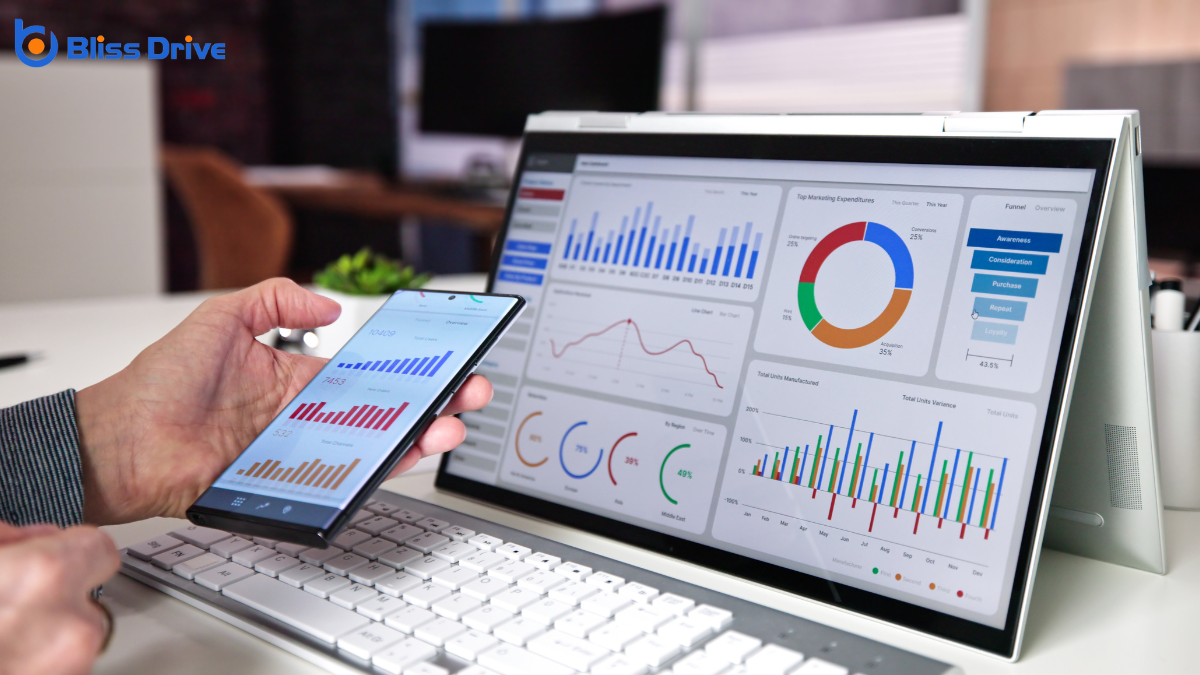Learn More About Us

When it comes to choosing the best competitive analysis tool, there's no one-size-fits-all answer. We need to evaluate our specific business needs and goals. Top contenders like SEMrush, Ahrefs, and SpyFu each offerThe specific product or service being promoted by affiliates. unique strengths and capabilities. The right choice may depend on factors like budget, ease of use, and integration with other platforms. Let's explore how these tools can provide insights into market trends and help us stay ahead of our competitors.
Although some may overlook them, competitive analysis tools are essential for any business aiming to thrive in today's dynamic market. They help us understand our competitors' strengths and weaknesses, allowing us to identify opportunities and threats.
By leveraging these tools, we gain insights into market trends and consumer behaviors that inform strategic decisions. We can't afford to operate in a vacuum, and staying informed about industry shifts is crucial.
These tools provide valuable data that enable us to refine our strategies, improve our offerings, and ultimately, enhance our competitiveness. Embracing competitive analysis tools means we're not just reacting to the market but actively shaping our path forward.
Understanding their importance helps us make informed decisions that drive growth and success in our business endeavors.

When we're selecting a competitive analysis tool, it's vital to focus on its data collection capabilities, ensuring we gather thorough and accurate information.
Real-time analysis features are essential for making timely decisions and staying ahead of market changes.
Additionally, robust competitor benchmarking tools help us measure our performance against key competitors, allowing us to strategize effectively.
To truly excel in competitive analysis, we need to focus on the tool's data collection capabilities. This is the backbone of any effective analysis.
We should guarantee our tool can gather diverse data types, from social media insights to website metrics. It must integrate seamlessly with other platforms and provide thorough coverage of our industry landscape.
The ability to customize data collection is vital. We want to target specific competitors, markets, or trends that matter most to us.
Robust tools offer automated data gathering, saving us time and reducing human error.
Finally, data accuracy and freshness are non-negotiable. We need to trust the information we gather to make informed decisions.
Real-time analysis is essential for staying competitive in today's fast-paced market. We've all experienced how quickly trends shift and consumer preferences change.
That's why a competitive analysis tool with real-time features can make a huge difference. It lets us monitor competitors' moves as they happen, offering a clear view of market dynamics.
Imagine getting instant alerts when a competitor launches a new campaignA set of ad groups sharing a budget, targeting options, and other settings. or changes pricing. This insight allows us to respond promptly, making informed decisions without delay. Real-time data helps us spot opportunities and threats, keeping us agile.
Additionally, integrating real-time analyticsThe use of data and related resources for analysis as soon as it becomes available. with other tools streamlines workflows. It guarantees that our strategies are based on the latest information, reducing guesswork.
In a world where timing is everything, real-time analysis is our competitive edge.
While real-time analysis keeps us agile in the market, competitor benchmarking tools provide the strategic depth necessary for long-term success. These tools help us compare our performance against industry leaders, offering insights into strengths and weaknesses.
When selecting a tool, we should look for features like customizable metrics, which allow us to tailor benchmarks to our specific goals. User-friendly dashboards are essential for visualizing data clearly and making informed decisions quickly. Robust data integrationThe process of combining data from different sources into a single, unified view. capabilities guarantee that all relevant information is considered, giving us a thorough view of our competitive landscape.
Additionally, predictive analyticsTechniques that use historical data to predict future outcomes. can guide our strategic planning by anticipating market trends. By carefully evaluating these features, we can choose a tool that not only meets our needs but also propels our growth.
Maneuvering through the myriad of competitive analysis tools available today can be intimidating, but honing in on the top contenders simplifies the task.
We need to focus on what each tool offers, considering key features like ease of use, data accuracy, and integration capabilities. Many tools promise extensive insights, but not all deliver the same value or user experience.
Let's compare some top players: SEMrush and Ahrefs are popular for their robust SEO and keyword analysis capabilities, while SimilarWeb excels in web trafficThe number of visitors to a website, often used as a measure of an affiliate's reach and influence. analysis.
Each has its strengths, and our choice depends on specific business needs. By analyzing these tools, we gain clarity on which suits our objectives best, ensuring we make informed decisions that drive competitiveness.
Let's explore Tool #1, which offers thorough data analysisThe process of inspecting, cleaning, transforming, and modeling data to discover useful information.... and real-time insights to keep us ahead of the competition.
By utilizing this tool, we can analyze vast amounts of data efficiently and make informed decisions quickly.
These features guarantee that we're always well-equipped with the latest market trends.
Delving into the domain of thorough data analysis, Tool #1 offers a robust suite of features that streamline and enhance our analytical capabilities. This tool aggregates vast amounts of data, presenting it in an easily digestible manner.
We can navigate through complex datasets with intuitive dashboards, allowing us to uncover patterns and trends without getting lost in the details. The ability to customize reports means we can focus on the metrics that matter most to our strategic goals.
Additionally, the tool’s user-friendly interface guarantees we spend more time analyzing data rather than figuring out how to use it. By harnessing these features, we can make informed decisions, giving us a competitive edge in our industry.
While real-time insights are critical for staying ahead in today's fast-paced market, Tool #1 excels by providing up-to-the-minute data that empowers our decision-making processes.
We can quickly access current trends, identify market shifts, and adjust strategies on the fly. This tool’s ability to deliver accurate, real-time information means our reactions are always timely and informed.
With Tool #1, we can monitor competitor activities as they happen, giving us a significant edge. It guarantees we're not just keeping pace but setting the pace.
Its user-friendly interface makes interpreting complex data straightforward, so we can focus on strategic actions rather than data crunching. This real-time capability transforms the way we navigate the market landscape, guaranteeing we're always one step ahead.

Tool #2 offers a range of features that enhance our competitive analysis capabilities, making it a valuable asset in our toolkit. It provides detailed market data, enabling us to pinpoint trends and shifts in our industry.
With intuitive dashboards, we can visualize complex data with ease, allowing us to grasp insights quickly. The tool's customizable alerts keep us informed about competitors' key moves, ensuring we never miss critical developments.
Moreover, it integrates seamlessly with our existing platforms, enhancing our workflow efficiency. Its user-friendly interface means we spend less time learning and more time analyzing.
Tool #2’s robust reporting feature helps us create thorough reports, simplifying information sharing with our team. Ultimately, it empowers us to make informed decisions with confidence.
Although Tool #3 stands out with its innovative features, it elevates our competitive analysis by offering unparalleled data accuracy and depth.
This tool transforms how we perceive market dynamics, providing insights that empower us to make informed decisions. Its features are designed to spark curiosity and inspire confidence in the data we rely on.
Here’s what makes it exceptional:
With these features, Tool #3 becomes an indispensable ally in our strategic endeavors.
Let's turn our attention to the critical aspects of interface design elements, navigation, and accessibility when evaluating usability and user experience.
As we assess these components, we'll focus on how they contribute to a seamless interaction for users.
When evaluating usability and user experience, interface design elements play an essential role in how effectively a user navigates a competitive analysis tool.
We need a design that's intuitive, engaging, and responsive to make our journey seamless.
Let’s consider the emotions these elements can evoke:
These elements guarantee we enjoy a smooth, satisfying experience.
How do we guarantee a competitive analysis tool is both navigable and accessible? We must prioritize intuitive design and user-centric features.
A tool should offer a clear, uncluttered layout where users can easily find what they need without overwhelming instructions. Navigation menus should be logically structured, allowing us to move seamlessly between sections.
Regarding accessibility, let's confirm the tool accommodates diverse user needs. This includes screen reader compatibility and keyboard navigation for those with visual or motor impairments.
Additionally, offering customizable interface options empowers users to adjust settings to their comfort.

Why is it essential to carefully evaluate cost considerations and budgeting when using a competitive analysis tool?
It's vital because these tools can considerably impact our resources and the value we derive from them. Understanding the financial implications allows us to make informed decisions, guaranteeing we don’t overspend or underspend on essential features.
Here are some factors to keep in mind:
Balancing cost with functionality guarantees we maximize benefits while staying financially sound.
Although competitive analysis tools can be complex, they've proven to be game-changers for businesses across various industries.
Let’s explore a few success storiesA feature on platforms like Instagram and Facebook where users can post photos and videos that disap... that highlight their impact. One e-commerce company used these tools to identify gaps in their product offerings compared to competitors. By strategically expanding their inventory, they saw a 30% increase in sales within six months.
Another success story involves a tech startup that effectively used competitor insights to refine its marketing strategy. By targeting overlooked market segments, they increased their customer base by 40% in just a year.
These examples show how insights gleaned from these tools can drive significant growth and enhance decision-making. They remind us that understanding the competition can leadA potential customer referred by an affiliate who has shown interest in the product or service but h... to remarkable business transformations.
When selecting a competitive analysis tool for your business needs, it's essential to contemplate specific factors that align with your unique goals.
We need to guarantee that the tool we choose doesn’t just fit our budget but also enhances our strategic decision-making.
Let’s focus on what truly matters to us and our business journey.
In our journey to find the best competitive analysis tool, we've explored various features and benefits of top contenders like SEMrush, Ahrefs, and SpyFu. Each tool offers unique strengths, but the ideal choice depends on aligning with your specific business needs and budget. By focusing on usability, predictive analytics, and integration capabilities, we can guarantee the tool we choose will provide valuable insights to drive strategic growth. Let's make an informed decision that propels our business forward.
